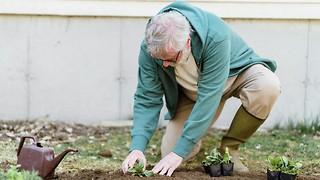The History of a Cantabrigian Student in Nine Objects
In the first of the series, the director of the eminent Rugeloût Institute, Prof. Autuneuille, shows us the first of nine artefacts that tell the story of a Cambridge student
Foreword

It is with great pleasure that Varsity publishes the latest collaborative project between its own Artefacts and Antiquities Bureau and the renowned Rugeloût Institute. In a series of nine columns, the director of The Rugeloût institute, the eminent Prof. Autuneuille takes us through nine artefacts from his collections that tell the story of a Cantabrigian student. On behalf of all of us at Varsity’s Artefacts and Antiquities Bureau I wish you an enjoyable and edifying read.
Aurélien Guéroult
Chairman, Varsity’s Artefacts and Antiquities Bureau
September 2015

A Word
Telling stories through things is what musea are for. And because The Rugeloût Institute has been collecting things for over 150 years, it’s not a bad place to start if you want to use objects to tell the story of a Cantabrigian student. This weekly column is in fact simply the latest iteration of what The Institute has been doing, or attempting to do, since its foundation in 1862 by the 3rd Viscount of Wixeston-upon-Tyne, Marc-Hubert Rugeloût. Of course, our doors are always wide open for you to view our collections at no. 17 St Eligius Street, Cambridge, CB2 1HX, United Kingdom of England, Scotland, Wales and Northern Ireland.
Prof. Roger Autuneuille
Director, The Rugeloût Institute
September MMXV
Beginnings

1. WilkoTM 80l Clear Plastic Storage Box (with Original Lid)
Plastic box, from the Cherry Hinton Gorge, Cambridgeshire
1.8-2 million years old
This plastic box is one of the earliest things that humans ever made; in this history of a Cantabrigian student, this quadrimillennial clear plastic cuboid is where it all begins. We are still not entirely sure what function it held- several hypotheses have been emitted. The one currently most in vogue is that it might have been a funereal urn, containing the ashes of a whole tribe or perhaps a family ossarium, in which relatives’ bones were kept. These hypotheses do not explain the presence of trace quantities of green pigment, alcohol residue and mole fur, which have led experts to believe it might have been a ‘shaman’s bath’, in which were conducted pagan baptisms. We know shaman’s baths, perhaps inherited from prehistory, existed in the 11th century. One such is described in the English Chronicler Orderic Vitalis’ account:
‘… so, the shaman Leofric beckoned Ælgifu forwards and plunged his head into the potion he had brewed within his bath. That afternoon he had exsanguinated two white doves, tossed in the teeth of a horned viper, collected juice from a heifer’s second stomach, scaled a striped halibut, extracted gall from two medium-sized toads, ground a Bactrian camel’s molar, shredded the wings of a pipistrelle and stirred four times round in an anti-clockwise direction using the femur of a Barbary macaque to make his concoction. Having held the initiate’s head within the liquid for seven seconds, he wiped it dry with an albino mole hide. Thus Ælgifu was baptised into their fellowship and received as Leofric’s disciple.’
Book III, 275-290.
What we do know about this fascinating artefact is what one of its more recent previous owners used it for. In 1820, Tarquin Rugeloût (father of our founder Marc-Hubert), purchased the box from a London Antiquarian and used it as a storage receptacle in which to keep his socks when he moved from his parent’s residence to his room in Trinity College Great Court. In fact, he was so pleased with the box’s acquisition that he penned a sonnet in its honour:
My Box
Shall I compare thee to a sackcloth bag?
Thou art more rigid and rectangular.
Despite your contents’ weight your sides won’t sag,
The way you stack is nice and regular.
Sometimes a bag will stretch and lose its shape
And oft it rips and spills its contents out;
And tatty cardboard boxes will need tape
Or through the holes will seep my sauerkraut;
But thy eternal summer shall not fade,
Your multi-functionality astounds;
I’ve filled your bowels with Pimms and lemonade
Or used you as a kennel for my hounds.
So long as men can breathe, or eyes can see,
You’ll live. (I’ve got an eight year warranty.)
Tarquin Rugeloût, 1820
Read on next week, to see what fascinating object we’ll have in store for you in this brand new series of The History of a Cantabrigian Student in Nine Objects.
 News / Uni Scout and Guide Club affirms trans inclusion 12 December 2025
News / Uni Scout and Guide Club affirms trans inclusion 12 December 2025 News / Cambridge Vet School gets lifeline year to stay accredited28 November 2025
News / Cambridge Vet School gets lifeline year to stay accredited28 November 2025 News / Cambridge study finds students learn better with notes than AI13 December 2025
News / Cambridge study finds students learn better with notes than AI13 December 2025 Science / Did your ex trip on King’s Parade? The science behind the ‘ick’12 December 2025
Science / Did your ex trip on King’s Parade? The science behind the ‘ick’12 December 2025 News / Pembroke to convert listed office building into accom9 December 2025
News / Pembroke to convert listed office building into accom9 December 2025







